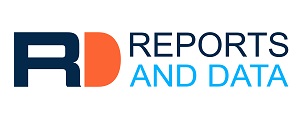Nanotechnology in Medical Devices Market Set to Reach USD 14 Billion by 2034

Reports And Data
Driven by Innovation and Rising Healthcare Needs
VANCOUVER, BRITISH COLUMBIA, CANADA, August 25, 2025 /EINPresswire.com/ -- The global Nanotechnology in Medical Devices Market is experiencing strong growth, projected to expand from USD 5.0 billion in 2024 to USD 14.0 billion by 2034. This reflects a robust compound annual growth rate (CAGR) of 10.70%, supported by advances in medical technology, rising healthcare demands, and favorable government initiatives.One of the fastest-growing areas within the market is diagnostic imaging devices. The adoption of nanotechnology in imaging is improving accuracy while reducing radiation exposure for patients. Alongside this, targeted drug delivery systems and minimally invasive surgical devices are also gaining momentum, as they offer greater precision and faster recovery times compared to conventional approaches.
Regional Outlook
North America is expected to lead the market, thanks to strong research and development investments, supportive regulatory frameworks, and early adoption of innovative technologies. Meanwhile, Asia Pacific is forecasted to be the fastest-growing region, driven by rising healthcare spending, technological adoption, and growing demand for advanced treatment options across developing economies.
Get Free Sample PDF Copy Of This Report At: https://www.reportsanddata.com/download-free-sample/0024948
Market Drivers
Technological integration is a major factor shaping the market’s growth. The combination of nanotechnology with artificial intelligence and machine learning is creating smarter medical devices that can improve diagnostic accuracy, personalize treatment, and lower costs. For example, AI-powered nanodevices are projected to reduce treatment costs by as much as 20% over the next decade.
Nanotechnology In Medical Devices Market Segmentation
By Product Type
Diagnostic Imaging Devices
Therapeutic Devices
Surgical Devices
Implantable Devices
Wearable Devices
By Application
Drug Delivery
Diagnostic Imaging
Tissue Engineering
Biomaterials
Regenerative Medicine
By End User
Hospitals
Ambulatory Surgical Centers
Specialty Clinics
Research Institutes
By Technology
Nanomaterials
Nanoelectronics
Nanophotonics
Nanobiotechnology
By Distribution Channel
Direct Sales
Distributors
Online Platforms
Public investment and government initiatives are also accelerating progress. The U.S. National Nanotechnology Initiative allocated USD 1.4 billion in 2023 for nanotechnology research, while the European Union’s Horizon Europe program has dedicated €1 billion to nanotechnology projects aimed at healthcare advancements. Additionally, regulatory agencies are making it easier for innovative products to reach the market. The FDA’s recent guidelines on nanotechnology have shortened approval timelines by about 25%, encouraging companies to invest more in innovation.
Product launches continue to showcase the potential of nanotechnology. For instance, Medtronic introduced a nanotechnology-based cardiac monitoring device in 2024 that delivers real-time analytics, helping physicians manage patients more effectively. The product quickly gained traction, capturing a 15% share of its market segment within its first year.
Key Challenges
Despite the positive outlook, the industry faces challenges that may slow its growth. Regulatory and technical complexities remain significant. Compliance costs average around USD 2 million annually for companies seeking FDA and EU approvals, a hurdle that can discourage smaller businesses. The lack of standardized testing methods for nanomaterials also delays product approvals and increases development costs.
Technical barriers include the complexity and high cost of manufacturing nanoscale materials, making scalability difficult. Data security is another concern, as nanotechnology-enabled devices often collect sensitive patient information. According to the Nanotechnology Industries Association, nearly 70% of companies see data privacy issues as a major barrier to adoption. In addition, there is a shortage of skilled professionals who specialize in both nanotechnology and medical device development, further slowing innovation.
Future Outlook
The market’s long-term growth is supported by global health trends, such as the rise in chronic diseases and an aging population that is expected to reach 1.5 billion by 2030, according to the World Health Organization. Minimally invasive procedures, which are increasing by about 15% annually, will continue to boost demand for nanotechnology-based devices. Sustainability is also becoming a major focus, with companies exploring biodegradable nanomaterials that reduce environmental impact and align with global green initiatives.
Request customization on the report @ https://www.reportsanddata.com/request-customization-form/0024948
Leading CompaniesTop 10 Companies
Abbott Laboratories
GE Healthcare
Medtronic
Boston Scientific
Stryker Corporation
Thermo Fisher Scientific
Smith & Nephew
Philips Healthcare
Siemens Healthineers
Johnson & Johnson
With strong technological progress, supportive government initiatives, and growing global healthcare needs, the nanotechnology in medical devices market is poised for significant expansion over the next decade. While challenges around regulation, costs, and technical expertise remain, the opportunities ahead highlight the sector’s potential to transform healthcare and improve patient outcomes worldwide.
John W
Reports and Data
+1 2127101370
sales@reportsanddata.com
Legal Disclaimer:
EIN Presswire provides this news content "as is" without warranty of any kind. We do not accept any responsibility or liability for the accuracy, content, images, videos, licenses, completeness, legality, or reliability of the information contained in this article. If you have any complaints or copyright issues related to this article, kindly contact the author above.
